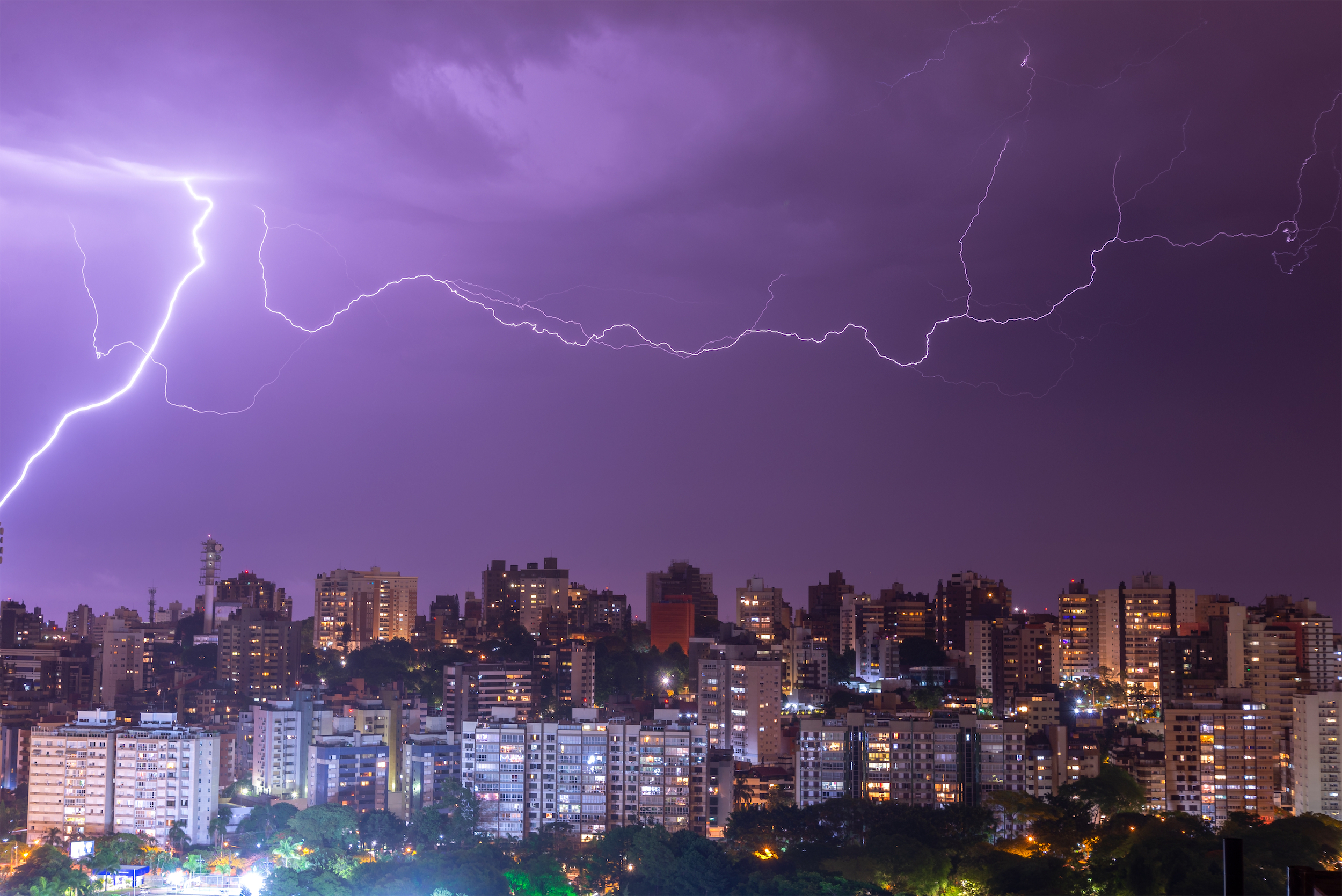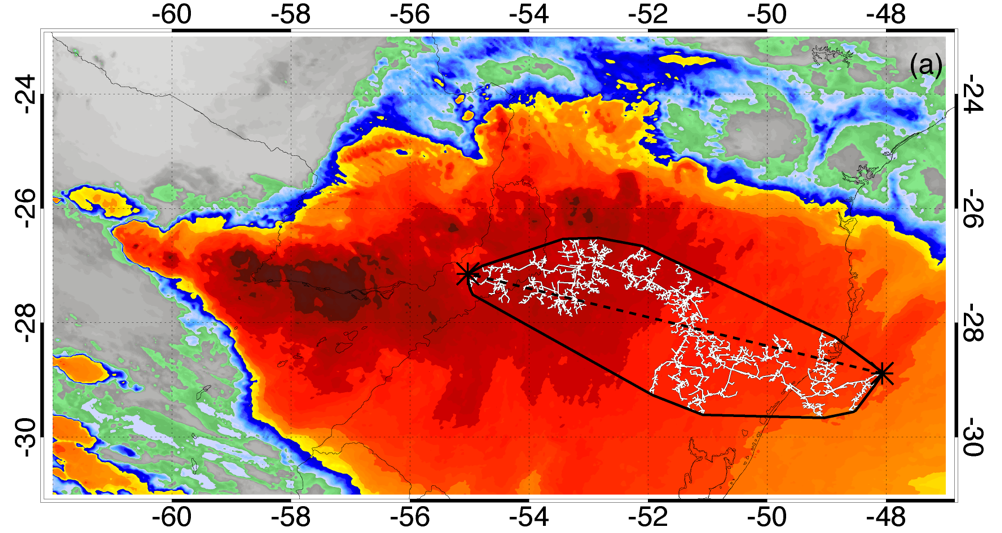400-mile-long lightning bolt over Brazil is biggest in recorded history
The epic ‘megaflash’ was long enough to connect Chicago with Toronto.

On Halloween in 2018, the sky tore open above Brazil. A single gargantuan lightning bolt sliced through the atmosphere over the country's southern tip, stretching more than 440 miles (700 kilometers) from the Atlantic coast into the edge of Argentina.
According to a new analysis from the World Meteorological Organization (WMO), this epic "megaflash" was the single longest lightning bolt ever recorded.
Using new satellite technology, scientists confirmed that the epic bolt was more than twice as long as the previous record-holder, a 200-mile-long (320 km) bolt that blazed over Oklahoma in 2007. It's not that lightning is getting bigger, the researchers noted in a statement — rather, lightning-monitoring technology is improving by leaps and bounds.
Related: How big can lightning get?
"It is likely that even greater extremes still exist, and that we will be able to observe them as lightning-detection technology improves," Randall Cerveny, chief rapporteur of Weather and Climate Extremes for WMO, said in the statement.
Lightning occurs when cold air and warm air collide inside thunderstorms, Live Science previously reported. Ice crystals in the cold air bump into water droplets in the warm air, creating friction and electrical charges that move throughout the cloud. When the bottom of a cloud becomes too overloaded with negative charges, electricity courses towards a positively-charged region, either on the ground or elsewhere in the cloud.

Lightning tends to strike most often in regions of high humidity (where convection causes more thunderstorms to form) and mountainous regions with high altitude. For these reasons, South America is one of the world’s leading lightning hotspots. Lake Maracaibo in Venezuela is considered the lightning capital of the world, with electrical storms flashing across the sky nearly 300 nights a year, according to a 2016 NASA study.
Sign up for the Live Science daily newsletter now
Get the world’s most fascinating discoveries delivered straight to your inbox.
For the new analysis (which will also be published in a forthcoming issue of the journal Geophysical Research Letters), WMO scientists studied several large lighting strikes recorded by four weather-monitoring satellites operated by the U.S., the European Union and China. This space-eye view gave the researchers an edge over previous studies, which confirmed record-breaking bolts primarily with ground-based monitoring networks, the team wrote.
In addition to the nearly 440-mile-long bolt (long enough to connect Boston to Washington, D.C., or Toronto to Chicago), the new analysis also revealed a new record-breaker for longest bolt duration. That honor goes to a bolt that lit up the sky over northern Argentina for nearly 17 seconds in March 2019. The previous record-setter flashed over France for 7.74 seconds in August 2012.
- What Causes Eerie Volcanic Lightning?
- Elves, Sprites & Blue Jets: Earth's Weirdest Lightning
- What If Earth's Magnetic Poles Flip?
Originally published on Live Science.

Brandon is the space/physics editor at Live Science. His writing has appeared in The Washington Post, Reader's Digest, CBS.com, the Richard Dawkins Foundation website and other outlets. He holds a bachelor's degree in creative writing from the University of Arizona, with minors in journalism and media arts. He enjoys writing most about space, geoscience and the mysteries of the universe.










